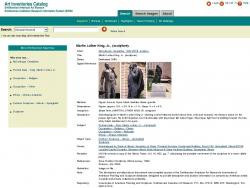Susan Ogilvie's collections
Communes, Counterculture, and the Back to the Land Movement
<p>This collection includes a variety of photographs taken by Lisa Law. Students will examine the photographs and a few artifacts and try to draw conclusions about the ways in which the commune or back-to-the-land movement challenged the norms of traditional United States society in the 1960s and 1970s. A link to an exhibit website is include and allows students to check their assumptions, and students are asked to compare elements of the counterculture with that of mainstream 1960s and 1970s culture. </p><p>Tags: counterculture, commune, hippie, granola, back to nature, communal living, co-op, cooperative, sixties, seventies, Woodstock, change over time, compare, ashram, silent majority</p>
 Susan Ogilvie
Susan Ogilvie
10
The Women's Movement
<p>This collection shows the successes of the Womens Movement during the 1960s and 1970s<br /></p>
 Susan Ogilvie
Susan Ogilvie
6
The Space Race
This topical collection is an overview of the major events and developments of the space race that could supplement a lesson on the Cold War; it includes photos and videos. <br />
Goal: After exploring the collection, students will have a better understanding of the space race, how it was influenced by world politics, and how it influenced world politics.<br />
<br />
Tags: Sputnik, Apollo missions, space race, cold war, moon, moon landing
 Susan Ogilvie
Susan Ogilvie
23
Rebels and Beats
<p>This topical collection is based on a past exhibit in the National Portrait Gallery entitled <a href="http://www.npg.si.edu/exh/rebels/index2.htm" target="_blank">Rebels and Beats: Painters and Poets of the 1950s</a>. This collection might be used by teachers or students who want to explore the counterculture of the 1950s, a time period typically associated with conformity. The collection includes paintings, photographs, and videos related to the writers and artists involved in the Beat Generation, San Francisco Renaissance, Black Mountain College, and New York School scenes. </p><p>In what ways did these artists challenge the social norms of the time? Why is art often a means of challenging the status quo?</p><p>tags: Ginsberg, Kerouac, Ferlinghetti, de Kooning, Baraka, poem, counterculture, Beat Movement</p>
 Susan Ogilvie
Susan Ogilvie
43
The Black Power Movement
<p>Teaching about the Black Power Movement can be challenging, but has rich rewards. Misconceptions about the Black Power Movement abound, but the ability to contrast their strategies and aims with the earlier Civil Rights Movement allows Social Studies teachers to discuss the complex ways that social movements evolve, change, and respond to the times. In addition, a study of the Black Power Movement helps give context for a broader study of the economic and political shifts in the 1970s and 1980s and the rise of identity politics. This teaching collection includes a variety of resources that could be used to teach about the Black Power Movement, organized into sections for:</p><p>-People in the Movement</p><p>-Goals and Strategies of the Movement</p><p>-Teaching Activities</p><p>General guiding questions for this collection include:</p><p>-What were the distinct problems that the Black Power Movement tried to address? Do they remain today?</p><p>-What were the strategies of the Black Power Movement? Do you agree or disagree with these? </p><p>-Why and how do social movements develop and evolve? </p><p>-What defines a successful social movement? Was the Black Power Movement successful?</p><p>- Can a social movement survive beyond the demise of its leadership?</p><p>-What is the role of the arts in promoting the ideals of social movements?</p><p>This is a work-in-progress based on the digitized materials within the Smithsonian Learning Lab's collection--it is not meant to be wholly definitive or authoritative.<br /></p>
 Susan Ogilvie
Susan Ogilvie
31







